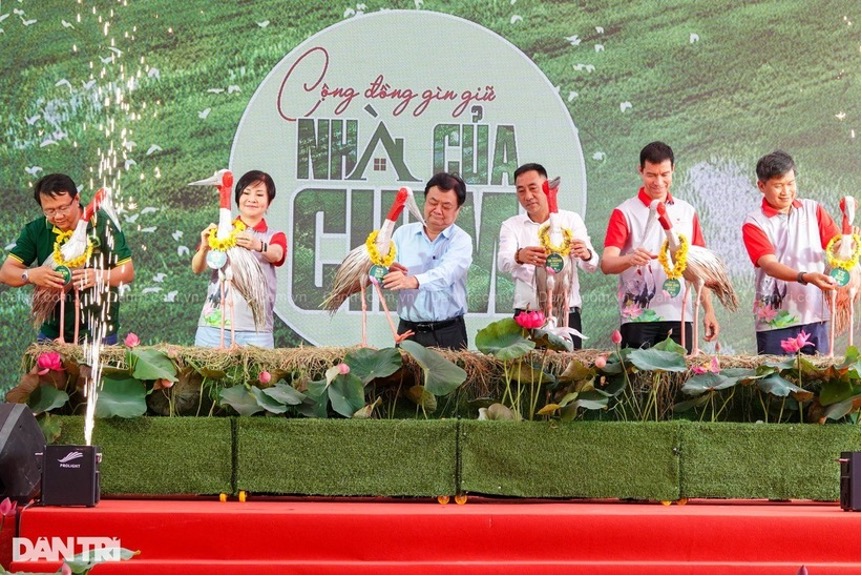Over the past week, two notable events related to wildlife conservation took place in Yen Bai and Dong Thap. Although different in species and location, both events highlight concrete progress in Vietnam's efforts to protect biodiversity.
Asiatic black bears rescued and transferred to the new center in Bach Ma
On April 18, Animals Asia, in collaboration with the Yen Bai Forest Protection Department, rescued two Asiatic black bears in Minh Quan Commune, Tran Yen District. The bears had been kept in captivity since 2004 under cramped conditions for exploitation purposes.
After being anesthetized and undergoing health checks, the two bears were transferred to the Vietnam Bear Rescue Center at Bach Ma National Park (Thua Thien - Hue). This modern facility, funded by Animals Asia, includes a quarantine area, a veterinary hospital, and semi-wild enclosures.
Initial assessments by veterinarians revealed that both bears were underweight, had gallstones, and suffered injuries to their legs. They will continue to be monitored and cared for in a suitable environment to rehabilitate their health and gradually adapt them to semi-wild living conditions.
Notably, the bears' owner voluntarily surrendered them, reflecting a positive shift in public awareness of wildlife conservation.
 Tram Chim National Park (Dong Thap) received six red-crowned cranes from Thailand. Photo: Dan Tri
Tram Chim National Park (Dong Thap) received six red-crowned cranes from Thailand. Photo: Dan TriRed-crowned cranes return to Tram Chim National Park
On April 20, Tram Chim National Park (Dong Thap) received six red-crowned cranes from Thailand. This event marks an important step in the "Conservation and Development Plan for Red-crowned Cranes at Tram Chim for 2022–2032."
The red-crowned crane, a rare bird species, once thrived in Tram Chim but has gradually disappeared in recent years due to habitat loss and climate change. The six cranes transferred this time are about seven months old and had completed their quarantine at the Saigon Zoo and Botanical Gardens before being moved to Tram Chim.
Under the plan, Dong Thap aims to rear and release at least 100 red-crowned cranes over the next 10 years, with a goal of at least 50 surviving individuals capable of breeding and thriving in the wild.
Wildlife rescue efforts not only protect individual animals but also contribute to maintaining ecological balance and restoring degraded ecosystems.